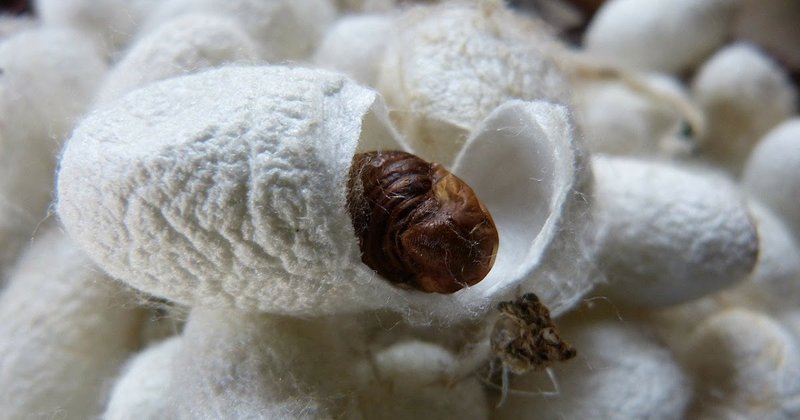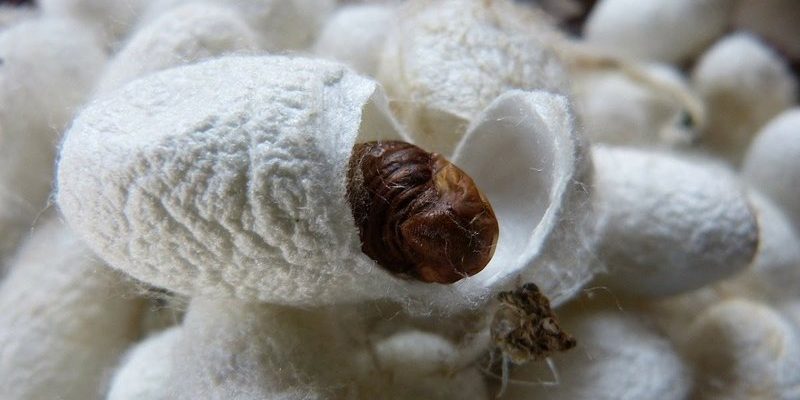
Imagine for a moment that you’re at a coffee shop with a friend. You’re sharing stories about where your clothes come from—did you know that silkworms can spin up to 1,000 meters of silk thread just from eating leaves? Crazy, right? Well, the way we extract silk can be just as intriguing. We’re going to explore the methods, the ethics involved, and why many people believe in a more humane way to gather silk.
What Are Silkworms and Their Role in Silk Production?
Silkworms, specifically the *Bombyx mori*, are the larvae of silk moths. When you think of these little guys, picture them as the dedicated workers of the silk world, nibbling on mulberry leaves and growing plump. Once they reach a certain size, they spin cocoons around themselves, made entirely of silk.
This cocoon is where the magic happens. It’s not just a protective shell; it’s a treasure trove of silk fibers. In traditional silk extraction processes, cocoons are boiled to obtain the silk threads. While this method is effective, it’s not very kind to the silkworms. Many enthusiasts argue it’s time to rethink how we gather this precious resource.
Let’s not forget that after spinning their silk, these silkworms are destined to transform into beautiful moths. Imagine the potential for vibrant life after that cocoon stage! This knowledge has sparked interest in more humane silk extraction methods that allow the moths to hatch and live their lives.
Humane Methods for Extracting Silk
Fortunately, there are several methods to harvest silk that prioritize the well-being of the moths. One popular approach is known as **”peace silk”** or “ahimsa silk.” This method involves allowing the silkworms to complete their transformation into moths before harvesting the silk. After the moths emerge, the empty cocoons are collected, which still contain precious silk fibers.
The process involves careful monitoring. Farmers don’t just let the cocoons sit; they watch the lifecycle closely to ensure they gather the silk at the right time. It’s like being a proud parent, cheering on the silkworms during their big moment!
Another humane technique is **”wild silk”** extraction. This method uses silk produced by silkworms that live in nature. Since these silkworms don’t spin cocoons in controlled environments, they typically shed the silk naturally when they molt. This way, no moths are harmed. Plus, wild silk has its unique character and texture, making it a great alternative for eco-conscious consumers.
The Benefits of Humane Silk Extraction
Choosing humane methods for silk extraction comes with a host of benefits. First and foremost, it supports ethical practices, allowing silkworms to live out their natural life cycles. Here’s why that’s a big deal:
- Animal Welfare: By prioritizing the health of the silkworms, consumers can feel good about their choices. It reflects a growing awareness about the treatment of animals in various industries.
- Environmental Impact: Many humane silk practices are more sustainable. They encourage biodiversity and help maintain healthy ecosystems, reducing the need for harmful farming methods.
- Unique Fabrics: The silk produced from these alternative methods often has unique textures and colors, adding value to the fabric and making it stand out in the market.
When you wear silk produced ethically, you wear a story—a story of respect for nature and its inhabitants.
Challenges and Considerations in Ethical Silk Production
While the idea of humane silk extraction is beautiful, it’s not without its challenges. One major hurdle is the **cost**. Ethical production methods can be more expensive, which might lead to higher prices for consumers. This makes it essential for producers to educate potential buyers about the value they’re getting.
Additionally, scaling these methods can be tricky. In a world that often prioritizes efficiency, finding ways to produce enough silk while ensuring ethical standards can feel like a balancing act. Many producers are experimenting with different techniques and farming practices to merge quality with quantity—much like how a chef perfects a recipe over time.
Lastly, consumer awareness is vital. More people need to know about the options available to them. If shoppers understand the benefits of humane silk, they’re more likely to choose products that reflect their values, pushing the market toward more ethical practices.
Comparing Traditional and Ethical Silk: What’s the Difference?
If you’re new to the world of silk, you might be wondering what sets traditional silk apart from ethical silk. Here’s a straightforward breakdown to help you see the differences:
| Aspect | Traditional Silk | Humane Silk |
|---|---|---|
| Silkworm Treatment | Often harmed during extraction | Allowed to live and complete their lifecycle |
| Cost | Generally lower | Typically higher due to sustainable practices |
| Environmental Impact | Can involve harmful farming practices | More eco-friendly, promotes biodiversity |
| Fabric Quality | Standardized textures and colors | Unique and varied textures |
Understanding these differences not only empowers consumers but also encourages a shift toward more mindful purchases.
How You Can Support Ethical Silk Production
Want to make a difference? Here are some ways you can support ethical silk without turning your life upside down:
- Choose Wisely: When shopping for silk products, look for labels that indicate humane or peace silk. Brands that prioritize ethical practices often proudly showcase this on their packaging.
- Educate Yourself: Stay informed about the practices of different brands and their sourcing methods. The more you know, the better choices you can make.
- Spread the Word: Share your knowledge with friends and family. The more people understand humane silk options, the more demand there will be for ethical production.
If everyone takes small steps, we can contribute to a larger movement for change—one that values compassion and respect for all living creatures.
Wrapping Up: The Beauty of Ethical Silk
In the end, the journey of silkworm silk extraction is more than just a process; it’s a reflection of our relationship with nature and how we choose to interact with it. By embracing humane methods, we can enjoy the luxurious feel of silk while ensuring that the silkworms behind it live fulfilling lives.
When you choose ethical silk, you’re not just making a purchase; you’re participating in a movement. A movement that stands for kindness, sustainability, and respect for our planet. So the next time you wrap yourself in a silk garment, remember the tiny moths that made it possible—doing so might just make that soft fabric feel even more meaningful.

